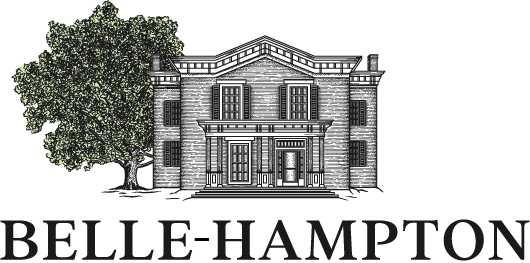Gettysburg: Our Family’s Story
The Battle of Gettysburg is a significant event in the history of the United States, marking a turning point in the Civil War. The three-day engagement involved intense fighting and resulted in over 50,000 casualties, making it the bloodiest single battle of the conflict. The battle was fought in and around the town of Gettysburg, Pennsylvania, in July 1863, and it is remembered as a critical moment in the country's history. But the battle’s impact was especially detrimental to the Hoge family.
In 1863, James Fulton Hoge and his wife Eliza welcomed their ninth child, Beverly Lacy Hoge. However, the year also brought mixed blessings for the family. James and Eliza's oldest son, Andrew Johnston Hoge, enlisted in the Confederate Army in 1861 when he turned 18, thinking he was going out into the world for a great adventure.
Andrew was part of the “Stonewall Brigade” under Brigadier General James Walker. His skill was as a sharpshooter. After a couple of years of successful fighting, he was now a battle-proven veteran and determined to win another skirmish, but this time on enemy soil. In June of 1863, he was promoted to the rank of Corporal.
On the morning of July 1, 1863, General Henry Heth headed toward Gettysburg with the aim of acquiring supplies. However, they were taken aback when they unexpectedly encountered Union cavalry, and an unplanned engagement followed. The two opposing forces fought fiercely in the scorching heat as the day wore on. The Confederates, who numbered around 30,000, ultimately overwhelmed the 20,000 Federal troops. The Federals retreated through Gettysburg, seeking refuge on Cemetery Hill, located south of the town.
On the second day of the battle, the Union defended a range of hills and ridges south of Gettysburg, which was shaped like a fishhook. Although the Confederates gained ground on both ends of their line, the Union defenders held strong positions as darkness fell.
On the third day of the Battle of Gettysburg, Lee attacked the Union line, causing heavy fighting on Culp's Hill. Cavalry battles erupted to the east and south. Longstreet led 12,500 Confederates in a disastrous infantry assault on the center of Cemetery Ridge. Pickett's Charge resulted in only one Confederate brigade briefly reaching the top of the ridge, with casualties approaching 60 percent.
After the battle was over, Andrew Hoge found cover in what is known as “Devil’s Den.” He was with other soldiers, including his cousins. As he was leaning against the stone wall with his gun in hand, a stray bomb fell and exploded in his lap. Everyone in the den died or fled immediately except for his cousin, Captain John Thomas Howe, who was the son of Major John Dunbar Howe and Sarah Boyd Logan Shepherd Howe. Despite being injured and risking his own life, John fetched water for Andrew from a nearby stream. He placed a blanket under his head, got his dying message, and then closed Andrew’s eyes once he passed.
John’s brother, Samuel Shepherd Howe, was there too on that fateful day. The Union army took both men as prisoners. Fortunately, Captain John Howe was taken to the hospital instead of having to endure the unfit conditions of Point Lookout, Maryland, where Samuel later died.
The dead Confederate soldiers were left in the fields. A photographer captured Andrew’s picture lying in the den, which was published in the “Review of Reviews” and later published in a book, “Photographic History of the Civil War” with the caption, “Whatever the results of the war, for this fine manly young Southern boy, it is over.” It was Gov. James Hoge Tyler who identified him in the newspaper.
But it wasn’t until 1864 that Dr. Moses Drury Hoge identified the body of Andrew when they buried the soldiers in Hollywood Cemetery. He was able to surmise his identification from the papers that were in his pockets.
After learning about his oldest son's death in the brutal Gettysburg battle, James Fulton Hoge decided to join the cause. Adding to the decision was the bloody battle of Cloyd’s Mountain, which happened right in his family’s backyard. Despite being 46 years old, he enlisted in the 4th Regiment Virginia Reserves, also known as Preston's Reserves, which was established in May 1864 and served in Southwestern Virginia. Colonel Preston, who was 53 years old himself, recruited men over 45.
After a year of battles, James returned home to his family. His wife and young children kept the farm in working order. Their oldest daughter, Anne (23 years old), and son, Robert (13 years old), would have played a large role in keeping their homestead working, although most farms were stripped of all supplies when the Union soldiers passed through.
After the Battle of Gettysburg, Confederate families faced profound loss and devastation. Thousands of soldiers from the Confederate Army fell in battle or succumbed to their injuries, leaving behind grieving families grappling with the harsh realities of war. Many families lost not only beloved sons, husbands, and fathers but also their primary sources of income and support. The emotional toll of these losses was compounded by the economic hardships that followed, as Confederate communities struggled to rebuild in the aftermath of defeat. The scars of Gettysburg ran deep, leaving an indelible mark on Confederate families for generations to come.
After the end of the war, James Hoge, who had served as an officer in the Confederacy, was required to pledge his loyalty to the United States. As a result, he lost his voting rights and law practice. James had already paid a high price to defend his family in the war, losing his eldest son, his career, and the prosperity of his farm, which he was now determined to restore. The reconstruction process was about to begin.

